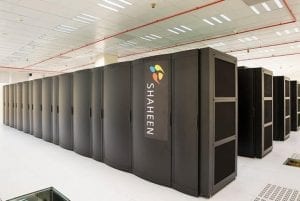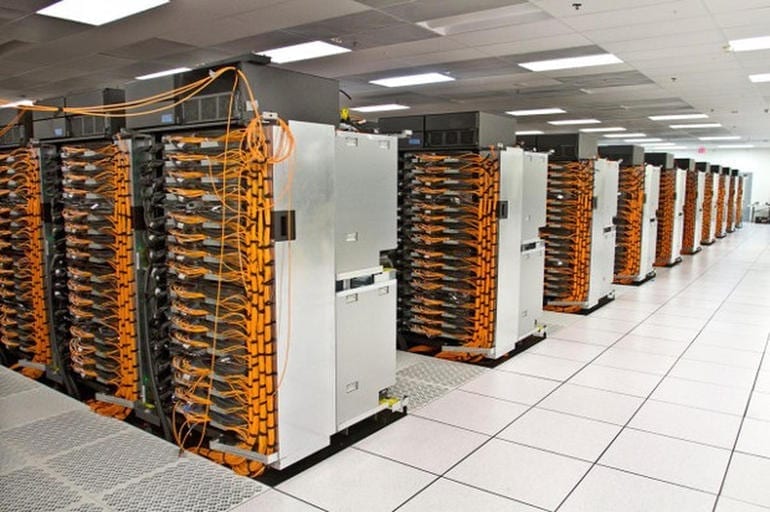ICT
The TOP10 list of the world’s fastest supercomputers is here
Here are the world’s fastest supercomputers according to the TOP10 list, together with a breakdown of their specs.
1. Sunway TaihuLight – China (New entrant)

- 3 times faster than the previous reigning champ.
- National Supercomputing Center in the city of Wuxi.
- utilising a new ShenWei processor and custom interconnect made in Wuxi.
- 40,960 64-bit, RISC processors, each of which has 260 cores.
- equivalent to 125 petaflops (quadrillion floating point operations per second) — 93 petaflops in the Linpack benchmark.
- Each compute node has 32GB DDR3 memory, for 1.3 PB across the whole machine.
2. Tianhe-2 – China (Previously: No 1)

- Capable of performing more than 33 quadrillion calculations per second at launch,
National Supercomputer Center in Guangzho - 16,000 nodes, each with two Intel Xeon E5 Ivy Bridge processors and three Xeon Phi 31SP co-processors, for a combined total of 3,120,000 computing cores.
- Combined with 1PB (petabyte) of memory, the machine’s theoretical peak performance is 54 petaflops.
3. Titan – US (Previously: No 2)
- more than 20 quadrillion calculations per second
- US Oak Ridge National Laboratory
- utilising 560,640 cores, split between AMD Opteron 6274 processors, clocked at 2.2GHz, and NVIDIA K20x accelerators.
- 27.1 petaflops and it has 710TB of memory.
4. Sequoia – US (Previously: No 3)

- US Lawrence Livermore National Laboratory
- an IBM Blue Gene/Q system, with a peak performance of 20.1 petaflops, achieved using 1,572,864 Power BQC cores, rated at 1.6GHz.
- 1.5PB of memory.
- CNK and Red Hat Enterprise Linux operating systems and custom interconnects.
5. K computer – Japan (Previously: No 4)

- more than eight quadrillion calculations per second at launch.
- Kobe’s RIKEN Advanced Institute for Computational Science, Fujitsu-designed machine packs in 705,024 SPARC64 VIIIfx processor cores, each rated at 2GHz, and 1.4PB of memory.
- 11.2 petaflops, it draws 12.7MW.
- custom interconnects and runs a Linux-based OS.
6. Mira – US (Previously: No 5)
- 10 quadrillion calculations per second
- Argonne National Laboratory in Illinois
- 10.1 petaflops, 49,152 compute nodes, each with a 16-core PowerPC A2 processor clocked at 1.6GHz, and 16GB DDR3 memory, giving it a total of 786,432 processing cores and 786TB memory.
- Linux-based OS, uses custom interconnects and draws 3.9MW.
7. Trinity – US (Previously: No 6)
- Los Alamos National Laboratory
- 11 petaflops, 16-core Xeon E5-2698v3 processors, clocked at 2.3GHz, for a total of 301,056 cores.
8. Piz Daint – Switzerland (Previously: No 7)
- the fastest system in Europe
- Swiss National Supercomputing Centre
- 7.8 petaflops peak performance, the Cray XC30 machine relies on 5,272 compute nodes, each with an eight-core Xeon E5-2670 processor, clocked at 2.6GHz, and a NVIDIA Tesla K20X GPU accelerator. Recently upgraded with a further 1,256 compute nodes, each with two 12-core Intel Xeon E5-2690 v3 CPUs.
- 169TB DDR3 and 32TB GDDR5.
- Aries interconnects and runs on a Cray Linux OS.
9. Hazel Hen – Germany (Previously: No 8)

- High Performance Computing Center Stuttgart
- Cray XC40-system, 7.4 petaflops. 15,424 Intel Xeon CPU E5-2680 v3 processors, clocked at 2.5 GHz, for a total of 185,088 cores.
- 1PB of memory, relies on Aries interconnects and draws 3.2MW.
10. Shaheen II – Saudi Arabia (Previously: No 9)

- King Abdullah University of Science and Technology in Thuwal
- 12,000 Xeon E5-2698v3 processors, each packing 16 cores clocked at 2.3GHz, for a total of 196,608 cores.
- 7.2 petaflops peak performance and draws 2.8MW.
- Cray Linux OS and uses Aries interconnects.
Source: oneappsgroup.com
